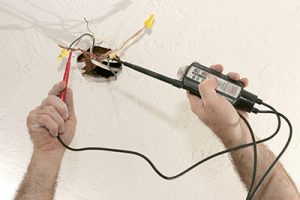 Becoming an electrician is a wonderful career choice. It involves repairing, installing, replacement, and maintaining electrical components in businesses, homes, and buildings in general.
Becoming an electrician is a wonderful career choice. It involves repairing, installing, replacement, and maintaining electrical components in businesses, homes, and buildings in general.
According to a BLS report, “the median annual wage for electricians was $55,190 in May 2018.” The BLS May 2018 data also includes that the annual wage of an electrician in California was $69,320.
You can get a license to be a Los Angeles electrician in any of the 5 licenses that fall under the electrical category for California. Most of what is needed to acquire the license are similar, and we have outlined the differences below. The 5 licenses include;
- General Journeyman Electrician
A journeyman electrician is someone who works under an electrical contractor. The job description includes installing, maintaining, or constructing electrical systems under the National Electrical Code. To apply for a general journeyman electrician license (and any license on this list), you will need proof of,
“successful completion of an apprenticeship program approved by the California Apprenticeship Council, the federal Bureau of Apprenticeship Training, or a state apprenticeship council authorized by the federal Bureau of Apprenticeship Training to approve apprenticeship programs, in the classification for which certification is sought”
This experience itself comprises at least 8000 hours of working under an electrical contractor. The application costs a fee of about $175 and is non-refundable. This license is provided by the Division of Labor Standards Enforcement (DLSE).
- Residential Journeyman Electrician
A residential electrician provides electrical services to residential buildings such as homes, hotels, and motels. This license is also issued by the DLSE. You will require proof of experience as stated in the quote above for a general journeyman license. The experience itself comprises 4800 hours of work under an electrical contractor. The fee for the application is also a non-refundable $175.
- Voice, Data, Video Technician (VDV)
A VDV technician is one that requires at least 4000 hours of work experience under an electrical contractor in installing, constructing, or maintaining electrical systems that “falls within the scope of the National Electrical Code, Articles 725, 770, (non-composite cables only), 800 (non-hybrid cables only), 810 and 820”.
The conditions for the proof of experience are the same as stated for the general journeyman electrician and so is the application fee of $175. The license is issued by the DLSE.
- Fire/Life Safety Technician
The job description is exactly what the name sounds like. A fire/life safety technician’s experience is quite similar to that of a VDV technician. It requires 4000 hours of working under an electrical contractor on systems that are “covered in the National Electrical Code (Article 760) and the National Fire Alarm Code”. The license is issued by the DLSE and fee for the application is $175 with no refunds.
- Non-Residential Lighting Technician
As a non-residential lighting technician, your job is to repair, service, and maintain all existing and non-residential lighting fixtures including the installation of retrofit upgrade fixtures. Your proof of experience provided should include at least 2000 hours of work experience under an electrical contractor. The license is issued by the DLSE and fee for the application is a non-refundable $175.
What is an Electrical Contractor License?
 Electrical contracting is a wide and successful industry. It has a value of over $130 billion annually. There are over 70, 000 electrical contracting companies and over 650, 000 electricians in the United States. They serve both residential and commercial electrical needs.
Electrical contracting is a wide and successful industry. It has a value of over $130 billion annually. There are over 70, 000 electrical contracting companies and over 650, 000 electricians in the United States. They serve both residential and commercial electrical needs.
An electrical contractor license is a license that allows the licensee to hire other licensed electricians, bid for electrical projects, and apply for relevant permits for jobs. Almost every state requires an individual electrician or company to obtain this license before they can provide electrical services.
Obtaining this contracting license varies between states. However, the individual electrician must be a master electrician. If it is a firm or company applying for the license, then they must present a master electrician who will be responsible for the contracting activities of the firm.
Requirements to Become an Individual or Business Electrical Contractor
- Complete electrical apprenticeship to become a journeyman electrician
- Meet all your State’s requirement to be a certified journeyman
- Earn a master electrician license
- Apply for the electrical contractor license and fulfill the requirements
Eligibility for an electrical contractor license
For an individual to be eligible for this license you must meet the following criteria;
- You must pay the required fees- this refers to the application fee and license fee which may vary across States
- Have insurance with a reputable insurer
- Commit to an educational and safety training
- Complete the necessary forms
- Possess the qualifications, training, and experience of a qualified electrician
- You must agree to comply with all the State guidelines, legislative requirements, and the codes of practice
The projects a licensed electrical contractor can handle
- COMMERCIAL AND INDUSTRIAL PROJECTS
A licensed electrical contractor can take on huge or small tasks within a commercial and industrial setting. These include working on schools, hospitals, office building, factories, and much more. Electrical contractors can bid competitively for these tasks and can also be hired as permanent members of the design-build team. The services they will provide to these buildings include the design and installation of panels, electrical systems, wiring, electrical equipment, and more.
- RESIDENTIAL PROJECTS
Residential projects are the most lucrative business for electrical contractors because homes have evolved to need more customized electrical services. There are integrated communication systems, security and entertainment systems in modern homes. An electrical contractor can perform electrical upgrades, installations, wiring, renovation projects, and more in residential settings. Some projects may require permits which the license enables the contractor to obtain.
- SERVICE AND MAINTENANCE JOBS
An electrical contractor can provide this to both residential and commercial settings. The contractors would need to service, maintain, and repair electrical systems. Sometimes such tasks are complete within a day or hours and have a flat rate cost.
The Electric Connection is a licensed electrical contracting company. We hire only the best electrical technicians to work for you. We are professional about our tasks and guarantee a satisfying service each time. You can call on us to handle any electrical tasks you might have. Our electricians ensure they get it right the first time, to save you cost, stress, and time.
 Not all projects require a permit, but most electrical works do. In Los Angeles, it’s easy to pull an electrical permit if you meet all the requirements. Since pulling permits differ from state to state, we have put together the Los Angeles guide you need.
Not all projects require a permit, but most electrical works do. In Los Angeles, it’s easy to pull an electrical permit if you meet all the requirements. Since pulling permits differ from state to state, we have put together the Los Angeles guide you need.




 If virtual events were hardly a big deal before, they sure are now. Several guidelines to help protect everyone from the pandemic have made it impossible to enjoy most events in public as we did before. Consequently, many scheduled events have been canceled, some postponed, and others going virtual.
If virtual events were hardly a big deal before, they sure are now. Several guidelines to help protect everyone from the pandemic have made it impossible to enjoy most events in public as we did before. Consequently, many scheduled events have been canceled, some postponed, and others going virtual.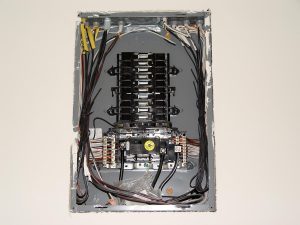
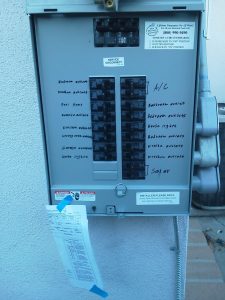 A safe electrical system is invaluable to every home and if you have a Federal Pacific Electrical Panel (FPE), replacing it is the best solution to ensure your electrical safety.
A safe electrical system is invaluable to every home and if you have a Federal Pacific Electrical Panel (FPE), replacing it is the best solution to ensure your electrical safety.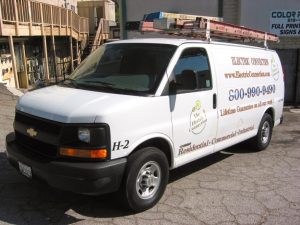 When something goes wrong with your electrical system, the first person you consider calling to fix the problem is an electrician.
When something goes wrong with your electrical system, the first person you consider calling to fix the problem is an electrician.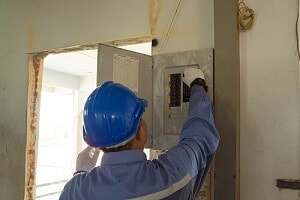 Some electrical issues are more common than you think. They occur in almost every home with electricity and while they may be no one’s fault sometimes, it’s often because your electrical system is subject to getting worn out. Read on as we discuss the most common electrical issues in Los Angeles homes and how to handle them.
Some electrical issues are more common than you think. They occur in almost every home with electricity and while they may be no one’s fault sometimes, it’s often because your electrical system is subject to getting worn out. Read on as we discuss the most common electrical issues in Los Angeles homes and how to handle them. Becoming an electrician is a wonderful career choice. It involves repairing, installing, replacement, and maintaining electrical components in businesses, homes, and buildings in general.
Becoming an electrician is a wonderful career choice. It involves repairing, installing, replacement, and maintaining electrical components in businesses, homes, and buildings in general. Electrical contracting is a wide and successful industry. It has a value of over $130 billion annually. There are over 70, 000 electrical contracting companies and over 650, 000 electricians in the United States. They serve both residential and commercial electrical needs.
Electrical contracting is a wide and successful industry. It has a value of over $130 billion annually. There are over 70, 000 electrical contracting companies and over 650, 000 electricians in the United States. They serve both residential and commercial electrical needs. Living in the bustling city of Los Angeles can be exciting. It’s a city with everything from being able to chase your dreams to the lazy days you are just looking to have fun. It’s almost possible to forget the high costs of living that comes with all the benefits.
Living in the bustling city of Los Angeles can be exciting. It’s a city with everything from being able to chase your dreams to the lazy days you are just looking to have fun. It’s almost possible to forget the high costs of living that comes with all the benefits.